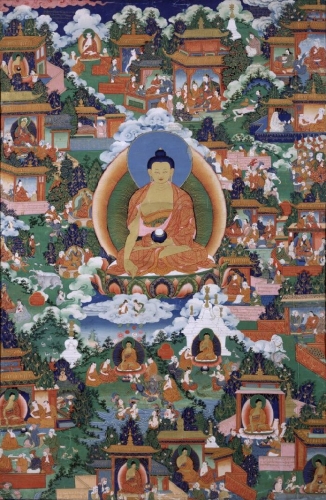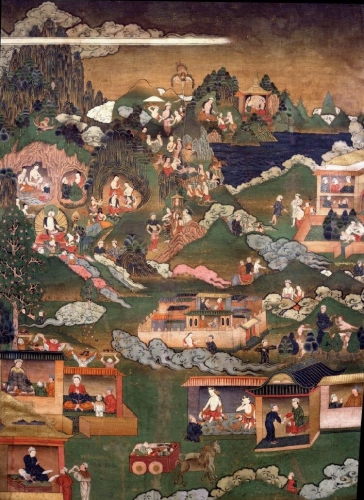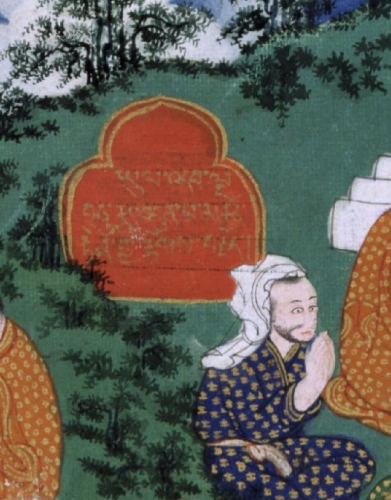Buddhist practice and Buddhist art have been inseparable in the Himalayas ever since Buddhism arrived to the region in the eighth century. But for the casual observer it can be difficult to make sense of the complex iconography. Not to worry—Himalayan art scholar Jeff Watt is here to help. In this “Himalayan Buddhist Art 101” series, Jeff is making sense of this rich artistic tradition by presenting weekly images from the Himalayan Art Resources archives and explaining their roles in the Buddhist tradition.
Part 1: Stories of the Buddha
Part 2: Life Story Quick Guide
Part 3: Jataka Tales Quick Guide
Himalayan Buddhist Art 101: Stories of the Buddha Part 4, Avadāna Stories

There are three groupings of stories relating to the historical Buddha Shakyamuni: his life story, the Jataka tales, and the Avadāna stories. The life stories of the Buddha are commonly known as the twelve deeds. The Jataka tales comprise a set of either 34 or 100 stories recounting the previous lives of the Buddha, where the latter collection includes the shorter one. The third group of narratives, the Avadāna, means “noble deeds.”
In Buddhist literature there are hundreds of stories that fall under the category Avadāna. Nevertheless, there is essentially only one subgroup of stories that is portrayed in Tibetan and Himalayan art: Bodhisattva Avadāna Kalpata. Composed by the Kashmiri scholar Kshemendra in the 11th century, the text is a compilation of 108 older Avadāna stories retold in the elegant Sanskrit verse of the time.

Images of the 108 stories of the Avadāna are far more difficult to identify than those that depict the life story of the Buddha or Jataka tales. The Avadāna text tends to be more complex, nuanced, and detailed in narrative style. This complexity lends itself to longer, more detailed visual narratives. Consequently, Avadāna paintings are typically found reproduced in sets of 23, 34, or 41 individual compositions—numbering far more than those sets depicting the Buddha’s life story or Jataka tales.
Avadāna stories can be identified using three methods. The first is to locate inscriptions written in Tibetan on the front of a painting. The inscriptions are usually one of two types: a decorative cartouche, like a medallion, giving the sequence number and name of the Avadāna story or a simple line of text containing the same information. Sometimes additional story information that leads the viewer through the most important events in the narrative is given.

The second method is a process of elimination. For example, if there is no iconography of a white elephant descending from the sky or scenes from the Buddha’s birth, one can deduce that the image does not portray the Buddha’s life story. If there are very few to no images of animals, especially as the central subject of the scene, the Jataka tales can be dismissed as a possibility.
The third method is through recognizing a large number of narrative vignettes in a single composition or multiple compositions that depict primarily or exclusively human figures in narrative scenes. This emphasis on groups of human figures is the most salient characteristic of Avadāna paintings.
Thank you for subscribing to Tricycle! As a nonprofit, we depend on readers like you to keep Buddhist teachings and practices widely available.